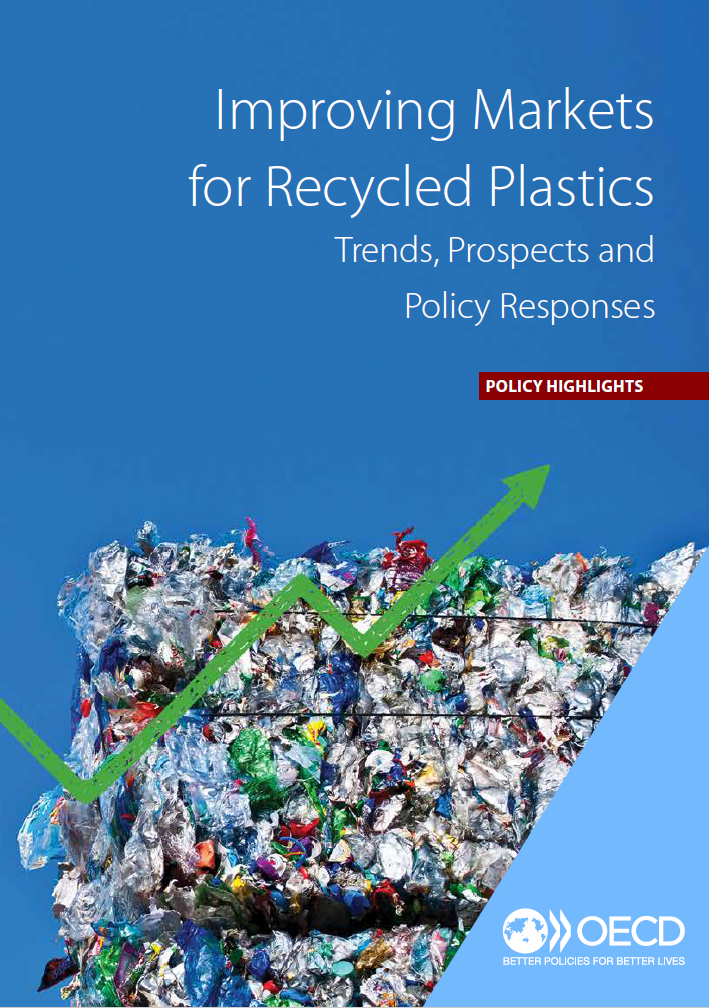
Improving Markets for Recycled Plastics: Trends, Prospects and Policy Responses
Report by the OECD about Strategies for improving markets for recycled plastics in global level.
Summary
Plastics have become one of the most prolific materials on the planet: in 2015 we produced about 380 million tonnes of plastics globally, up from 2 million tonnes in the 1950s. Yet today only 15% of this plastic waste is collected and recycled into secondary plastics globally each year. This report looks at why this is the case and what we can do about it, as the pervasiveness of plastics is becoming an urgent public health and planetary problem. Not only is the diffusion of waste plastics into the wider environment creating hugely negative impacts, but plastics production emits approximately 400 million tonnes of greenhouse gas (GHG) emissions annually as a result of the energy used in their production, transport, and final waste treatment. Improved plastics collection and recycling represents a promising solution to these concerns.
Key Messages
- Plastics are widely used materials that deliver a range of important benefits
to society. Their global production and use are expected to increase fourfold
to 2050. - Plastics production, use and disposal are also responsible for significant
greenhouse gas emissions and when poorly managed lead to pollution in
the natural environment, particularly in drinking water and the oceans. The
ecosystem damages and risks to human health resulting from marine litter
are only beginning to emerge, but are of considerable concern given the
longevity of plastics. - Transitioning to a more circular economy – one characterised by longer
lived plastics products with less toxic content and higher plastics collection
and recycling rates – could reduce the diffusion of plastics pollution in the
environment. One of the obstacles to this transition is poorly functioning
markets for recycled plastics: market volumes and liquidity are limited, and
prices are highly volatile. Global plastics recycling rates are estimated to be
less than 20% (with significant variation across countries), and the market
share of recycled plastics is currently less than 10%. - Potential suppliers of recycled plastics do not invest sufficiently in sorting
and recycling capacity because the profitability of these operations is
limited. Potential buyers (i.e. manufacturing firms) have limited incentives to
use recycled plastics as inputs because of uncertainty about their availability
and quality. Market outcomes could improve significantly if these issues
were addressed. - Policy interventions need to address bottlenecks on the demand and
supply side of recycled plastics markets. On the demand side, measures
should focus on helping establish a separate demand for recycled plastics
and levelling the playing field between virgin and recycled plastics. On the
supply side, measures are needed to help increase the supply of recovered
plastics and the quality of the resulting feedstock. This should include efforts
to improve the sustainability of plastic materials and products at the design
stage.






Improving Markets for Recycled Plastics: Trends, Prospects and Policy Responses 0 reviews
Login to Write Your ReviewThere are no reviews yet.